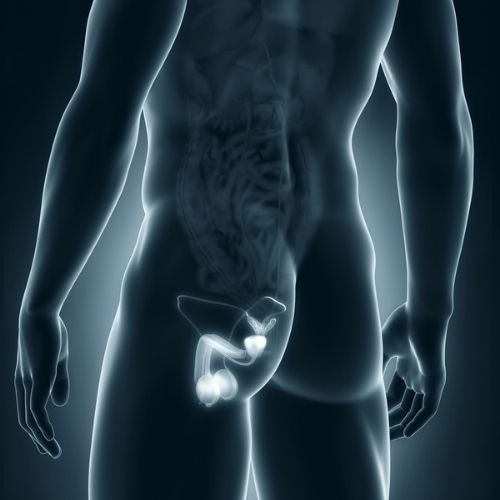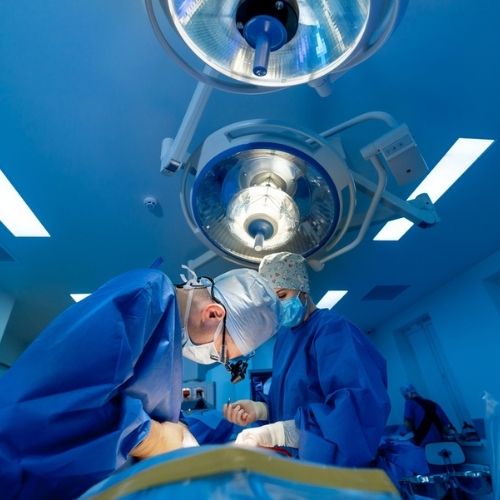As more couples across the globe find themselves grappling with increasing fertility challenges, researchers are uncovering connections between common sexually transmitted infections and reproductive health. Among these discoveries, the role of the human papillomavirus (HPV) in male fertility has emerged as a particularly intriguing area of study.
For decades, HPV has been primarily associated with cervical cancer in women, leading to routine screening through Pap tests and HPV testing. However, a recent study published in Frontiers in Cellular and Infection Microbiology has revealed that some types of HPV infections may also adversely affect male fertility by increasing the rate of sperm death.
But what does this mean for couples who are struggling to conceive? And how should this change our approach to HPV screening?

What is HPV?
HPV is one of the most common sexually transmitted infections globally. According to the Centers for Disease Control and Prevention (CDC), approximately 85% of people will contract an HPV infection at some point in their lifetime.
But HPV is not just a single virus — it is a family that encompasses more than 150 types of the virus, all primarily transmitted through sexual contact. The good news is that most HPV infections clear naturally within two years, as the immune system successfully eliminates the virus.
And not all HPV infections carry the same health risks. Experts categorize HPV into two main groups based on how they impact cancer risk.
Low-risk HPV
Low-risk HPV types (such as HPV 6 and 11) typically cause benign conditions like genital warts. While these can be uncomfortable and require treatment, they rarely lead to serious health complications.
How is high-risk HPV different?
High-risk HPV types (including HPV 16 and HPV 18) can cause precancerous cell changes that may progress to cancer if left untreated. The American Cancer Society has linked these high-risk HPV infections to a handful of different types of cancers, including cervical cancer, anal cancer, and throat cancer.
These high-risk types of HPV can also trigger abnormal changes in epithelial cells, the cells that form the superficial tissue that lines much of the body’s surface internally (e.g., the respiratory and digestive tracts) and externally (the skin).
These cell changes can affect the vulva, cervix, mouth, and throat, or even the tip of the penis, leading to intraepithelial neoplasia (IN), which in turn can create intraepithelial lesions. Occasionally, some of these lesions may mutate and give way to anal dysplasia or different types of cancer.
What does an HPV infection mean for men?
Most of the media attention on HPV centers around cervical cancers, from Pap smear screening recommendations to the marketing around the HPV vaccine. However, recent evidence shows that HPV can not only infect men but also affect their long-term health and fertility.
According to the study published in Frontiers, the most frequently detected high-risk type in male semen samples was HPV 16, followed by the low-risk HPV 6 strain.
Cancers associated with HPV infection in men
While cervical cancer remains the most well-known HPV-related malignancy, high-risk types of HPV can cause several cancers in men, including:
- Penile cancer: Though relatively rare, this cancer is strongly associated with high-risk HPV infections.
- Anal cancer: Particularly common in men who have sex with men, though it can affect any sexually active individual.
- Oropharyngeal cancer: This type of cancer includes cancers of the throat, base of the tongue, and the tonsils.
These cancers often develop years or even decades after the initial HPV infection, and they follow a process similar to that of cervical cancer. First, the virus settles in the cells at the surface of the skin, where it interferes with their normal function. Sometimes, this process results in the creation of abnormal cells, known as atypical squamous cells of undetermined significance. Occasionally, some of these abnormal cells will begin to grow uncontrollably and develop into a cancerous lesion.
Why does HPV go undiagnosed among men?
Unlike women, who routinely undergo cervical cancer screening through Pap smears (cervical cytology) and HPV testing, men face significant challenges in HPV diagnosis:
- Silent symptoms: Unless you get a wart-causing strain, HPV infections often cause no symptoms for men.
- No routine testing: Currently, there is no FDA-approved screening test for HPV in men. Most healthcare providers don’t routinely request HPV testing for male patients, and even fewer conduct genotype testing to distinguish between high-risk and low-risk strains.
- Lack of awareness: HPV is seen as a female concern, so many men remain unaware of the risks of a positive HPV test.
Combined, these factors can allow even a high-risk infection to remain undetected for decades.
Does HPV affect male fertility? What researchers say

With so many unknowns, can we put numbers on HPV’s impact on male fertility? For that, we need to look at what the study did and the factors it measured.
Dr. Virginia Rivero and a team of Argentinian urologists conducted this study. They examined 205 men attending a local urology clinic and collected both a sample of cells from their genitals and sperm samples. The cell samples were tested for HPV infections, and when positive, a complete genotyping study was performed to identify the HPV DNA present. Finally, they analyzed sperm samples for standard fertility markers.
Here are the key findings of their study:
- Approximately 19% of men had HPV infections, which was higher than initially expected.
- After the genotyping studies, they found that the most common type of HPV in men was HPV 16, a high-risk type.
- Men with high-risk HPV strains showed significantly higher levels of sperm death — that is, the sperm would die too quickly to potentially fertilize an egg, making them non-viable.
- Men with high-risk HPV strains also showed more oxidative stress markers in their semen, suggesting sperm quality may be impaired, contributing to potential fertility problems.
- Finally, all patients with HPV infections, regardless of the strain, seemed to have lower immunity.
Dispelling the myths: what do these studies truly mean?
The study’s findings are important, but they shouldn’t cause immediate concern. According to Dr. Bobby Najari from NYU Langone Health, an HPV infection is rarely the end of a man’s hopes of becoming a father.
While a higher sperm death rate may slightly affect conception, the most important indicators of male fertility are sperm count and motility — that is, the number of sperm in the semen and the speed at which they move.
On the other hand, for men who are already experiencing problems with conception, these results may change their approach to Assisted Reproductive Technologies (ART).
For example, before insemination, it is necessary to remove any dead sperm to ensure only viable, healthy sperm are used.
It’s also important to remember that this study was both small and brief, so it offers just a snapshot of the participants’ reproductive health. Besides replicating the study with a larger group, it would also be helpful to follow up with participants to monitor their fertility and see if reduced fertility rates continued over the long term.
Preventing and protecting against HPV is critically important!
Prevention and early screening are essential for managing HPV-related health risks in both men and women.
For both men and women, HPV vaccination remains the most effective way to prevent infection entirely. Ideally, the HPV vaccine should be given before sexual activity starts. However, it can still offer benefits to sexually active people who haven’t been exposed to all the HPV types covered by the vaccine.
Meanwhile, early detection of an HPV infection can also greatly influence future health. Important strategies for this include:
Risk factor assessment
Both men and women should discuss their risk factors with their healthcare provider, as those with higher risk may require more frequent screening intervals.
Co-testing for women
Along with a standard Pap smear, which checks for suspicious changes in cervical cells, co-testing for HPV subtypes can provide more valuable information for both prospective parents. This allows healthcare providers to identify high-risk HPV strains and abnormal cellular changes before they develop into cancer.
If screening shows abnormal Pap test results, additional tests can be scheduled. These might include a full pelvic exam or a colposcopy (where your doctor inserts a speculum into the vagina and uses a device called a colposcope to closely examine the cervix, vagina, and vulva). If concerns continue, a biopsy may be necessary.
Routine screening for men
While routine HPV screening options for men are more limited, individuals with higher risk factors — such as men who have sex with men or those with compromised immune systems — should discuss targeted screening strategies, such as viral swabs, with their healthcare providers.
Regular testing aims to detect HPV infection as early as possible so that if abnormal HPV test results reveal a problem, you and your urologist can devise a treatment plan best suited to the type of HPV and your individual needs.
Questions about male fertility? Ask Tower Urology
At Tower Urology, our team of board-certified urology specialists and surgeons focuses on diagnosing, assessing, and treating all aspects of male reproductive health. Our experts can help you gain clarity and find solutions to any urological health concern, from suspected STDs to complex fertility issues.
Tower Urology is a proud partner of Cedars-Sinai Medical Center, ranked #1 in California and #2 nationwide by U.S. News & World Report. This partnership showcases our commitment to providing the highest quality urologic care with top urologists in Los Angeles. Our extensive experience and access to Cedars-Sinai’s state-of-the-art facilities ensure that our outstanding and innovative urological services establish Tower Urology as a leader in Southern California.
We invite you to develop a care plan with Tower Urology. Please schedule an appointment online or call us at (310) 854-9898.
Tower Urology is easily accessible for patients across Southern California and the Los Angeles area, including Beverly Hills, Santa Monica, West Los Angeles, West Hollywood, Culver City, Hollywood, Venice, Marina del Rey, and Downtown Los Angeles.














































































